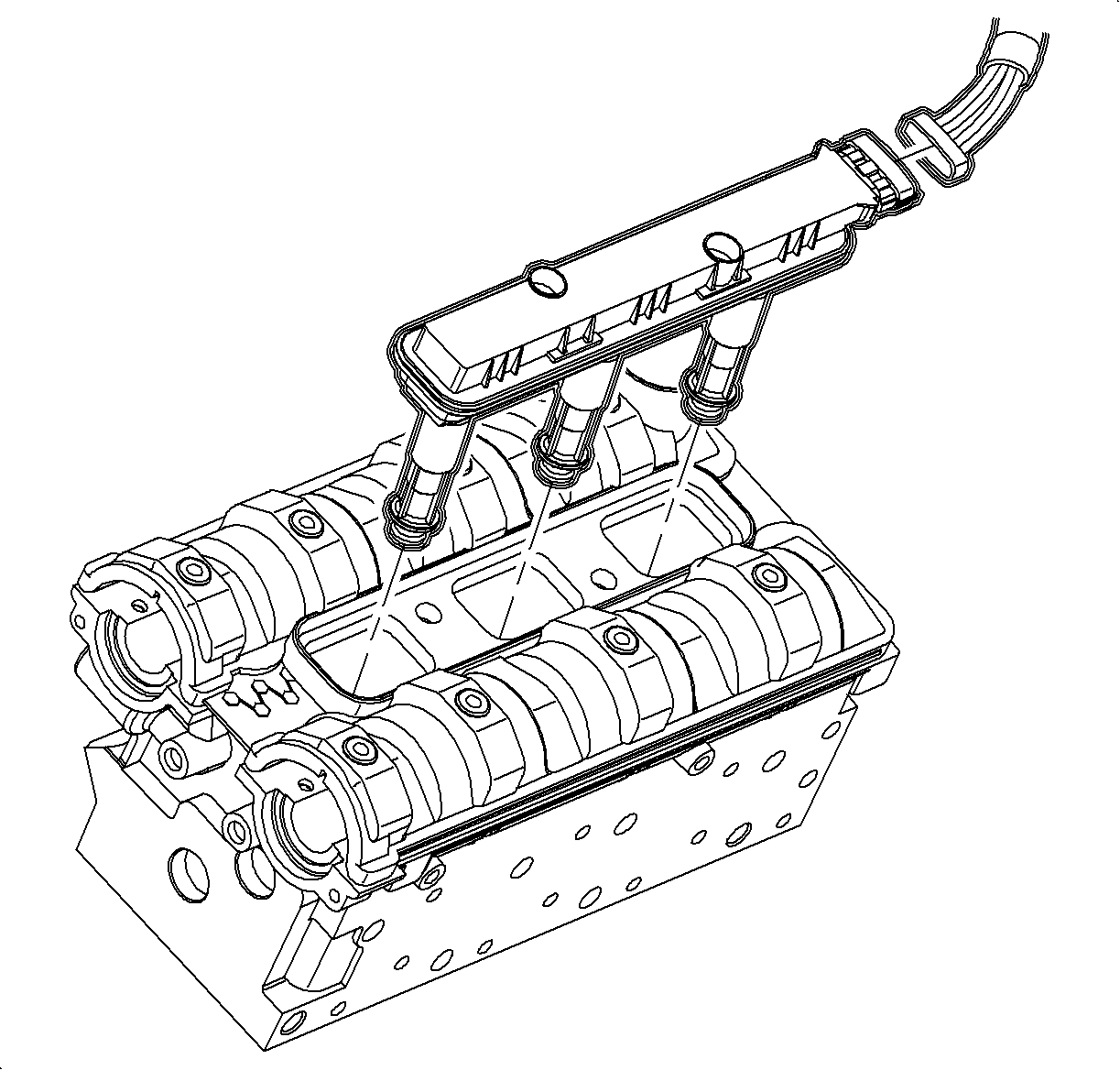Tools Required
SA9127E Gage Bar Set
If there is a lack of power, excessive oil consumption, or poor fuel economy, etc., cylinder leakage can be measured.
- Start the engine and allow it to reach normal operating temperature.
- Disconnect both ignition module connectors.
- Remove the ignition modules and remove the plugs.
- Rotate the crankshaft so each cylinder to be checked is at TDC. Timing marks are located on the front cover and vibration damper assembly for TDC verification. Access to the front crankshaft damper bolt can be achieved from the top of the vehicle with an open end wrench. A 3.175 mm (1/8 in) brass rod can be inserted through the spark plug hole to determine piston location relative to TDC.
- Attach an air supply to the SA9127E . The desired regulator In minimum pressure is 861 kPa (125 psi). The maximum is 1 034 kPa (150 psi).
- Insert the cylinder leakage adapter in the spark plug hole with the piston at TDC.
- Close the gate valve and adjust the regulator pressure to 689 kPa (100 psi).
- Open the gate valve. Observe the crankshaft during this operation.
- Repeat the previous steps on other cylinders. Record the readings.
- Remove the cylinder leakage tester and install the spark plugs.
- Install the ignition modules.
- Connect the ignition module harness plugs.

Caution: Cylinder leakage checks must be performed with the vehicle in park or neutral and the parking brake applied.
Important: The piston must be located at exactly top dead center (TDC) or the crankshaft will rotate when air pressure is applied.

Notice: Air supply for the tester should be clean and free from oil, moisture, and/or foreign particles that might be injected into the regulator or orifice chamber. Foreign debris can cause improper operation and erroneous readings.
Important: If the crankshaft rotates, the piston was not at TDC. The crankshaft will have to be relocated at TDC.

| 8.1. | Allow 60 seconds for the air pressure in the cylinder to stabilize. Observe the cylinder pressure gage and record the pressure. |
| Important: Make sure all cylinder leakage adapter fittings are tight and the piston is at TDC or incorrect readings will be obtained. Check the lower cylinders. |
| 8.2. | Listen for escaping air at the throttle body air inlet, oil fill cap, and exhaust outlet. |
| 8.3. | Remove the coolant bottle pressure cap and look for bubbles. |

| • | Normal Cylinder Leakage: 10 percent - 69 kPa (10 psi) |
| • | Maximum Leakage: 20 percent - 138 kPa (20 psi) |
| • | Difference Between Cylinders: 5 percent - 34 kPa (5 psi) |
Notice: Refer to Fastener Notice in the Preface section.
Tighten
Tighten the spark plugs to 25 N·m (18 lb ft).
Tighten
Tighten the ignition module bolt to 8 N·m (71 lb in).
